manna momentOn the fourth day of creation, God created the Sun, Moon and Stars (Gen. 1:14). The Hebrew text for stars is literally translated as ‘wandering stars’ and was used to describe any luminous object in the sky other than the sun and the moon. Hence, stars, in the this case also includes planets, their satellites, asteroids, and comets. The current science ideas about how the planets have formed have changed in numerous ways over the last 300 years and they will continue to change. So far these ideas have been counter to what is stated in the Bible. Take heed and know what you believe. Planet PresentationsI love when the students take the stage and present information that they researched and learned about. I was able to use some of their information for our Planet Trivia questions after we finished presentations. It was neat to see those whose planet they researched recognized the questions that were asked. Planet Trivia
0 Comments
Manna Moment Psalm 104:19- "He made the moon for the seasons." God made the moon to mark the seasons. Many people still follow a lunar calendar for celebrating major holidays. One example of this is the Jewish celebration of Passover which is always on the 15th day of the Hebrew month of Nisan. Jesus was crucified following the Passover meal which is why Christians and the Western world will move the celebration of Easter to whichever Sunday follows the Jewish Passover celebration. Because the holiday follows the lunar calendar, Easter always falls on a full moon. Planet Research Presentation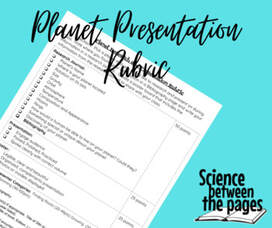 For weeks 9 and 10 of this unit, I am having the students research a planet and present on it. Here is the Planet Presentation rubric that I am using to evaluate them. This includes all the information that I expect to have in the presentation along with points to give for each objective reached. At the bottom of the rubric there are directions on how to write a bibliography. Phases of the Moon Card Game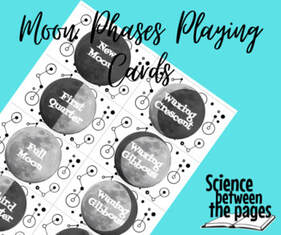 Instructions for playing: For every 2 players, you will need 3 ‘decks’ of cards or 3 sets of the eight phases of the moon.
Characteristics of the Moon Note Taking Guide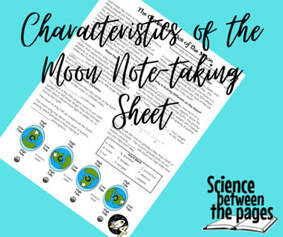 My favorite part of this note taking sheet is the bottom image. It is a great picture of what is happening to the Earth's tides as a result of the moon's gravity. It isolates everything but the movement of the earth so that you can see how we have two high tides and two low tides a day. Other topics included in this guide are:
Craters of the Moon Model This is a great explorative activity. The goal of this activity is to find out what factors affect the size and shape of craters that form when speeding objects strike the surface of the moon Materials Included:
The students were to smooth out a surface of flour, measure their marble and then decide on a height to drop their marble from. After they dropped it, they were to measure the width of the crater as well as the diameter of the ejecta that splattered at impact. They were to document this data and then choose if they wanted to try this at different heights with the same marble OR they could pick different shaped rocks that were lying around outside where we were and drop it at the same height. 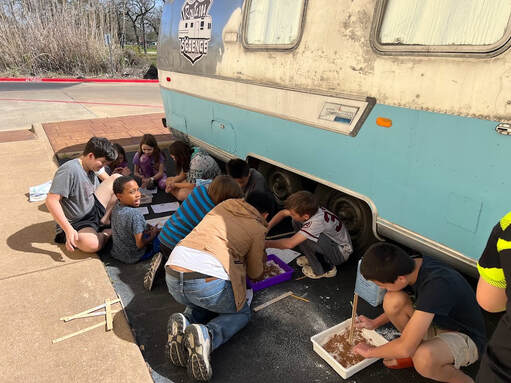 This is a plug for our Route 104 Mobile Science Classroom. It is no coincidence that our scripture for today's lesson comes from Psalm 104, the namesake of our mobile science classroom. manna moment: A light worth reflectingPsalm 8:3-4-"When I look at your heavens, the work of your fingers, the moon and the stars, which you have set in place, what is man that you are mindful of him, and the son of man that you care for him? The moon is different from the Sun in that it is not a star and does not produce its own light. We can see the moon because it reflects the light from the Sun. In the same way, we as Christians should reflect the light of our Savior, Jesus Christ. The light we shine does not come from us but from the Light of the World! Just as the moon can be seen at different phases depending on its position relative to the Sun and Earth, the light we shine is relative to our position before Jesus and among the people He created. What are the Phases of the Moon?The irony that the moon goes through eight phases during one orbit around the Earth, yet we only see the one side of the moon always. Would this be evidence for intentional and intelligent design by a Creator God? Here in our note taking guide, I had the students walk along with me through the different phases. As we did, we filled in the chart on the notetaking guide Some of the points that we learned from the note taking guide were that the moon moves through a very predictable pattern The eight phases of the moon begin with a Waxing Crescent- Waxing means growing First Quarter- Means that the moon has made it one quarter of its orbit around the Earth Waxing Gibbous- Waxing, of course, means growing and Gibbous means 'hump' Full Moon- While this is full to us, the moon is actually only halfway done with its orbit around the Earth. Waning Gibbous- Waning means 'lessening' and Gibbous means hump Third Quarter- The moon is three quarters of the way done with its orbit Waning Crescent- Waning is lessening New Moon- The moon has completed its orbit around the Earth and is now between the sun and the moon so it isn't visible to Earth. Why do we see the same face of the moon?There is short activity that you can do to demonstrate this idea. Try it out with a friend. Get ready to walk forward following a circular path around your friend. Point your elbow towards your friend. Did you rotate 360 degrees? What side of your body did they see? Here is a YouTube video that explains it as well. https://www.youtube.com/watch?v=OZIB_leg75Q Phases of the Moon Card gameHere are some cards that go with this game. You will need 3 'decks' or 3 complete sets of cards for every two people.
Manna MomentPerspective is how you see something. The activity that we did today was about perspective. We built a model of the Big Dipper as we view it from earth. In our model, we included a view that was not from earth to allow us to see that the stars don't look like a big dipper from anywhere else in space but from our point of view. Often, we are so used to seeing things from our perspective that we forget that God's perspective is completely different. God's thoughts are NOT our thoughts (Isaiah 55:9). This also reminds us to strive to think on things that are above as stated in Colossians 3:1-2. "If then you have been raised with Christ, seek the things that are above, where Christ is, seated at the right hand of God. Set your minds on things that are above, not on things that are on earth." making a model of the Big dipper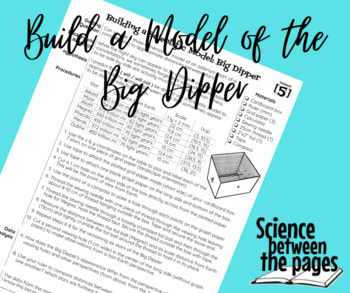 Here are the instructions for making this model of the Big Dipper that you can view from several different perspectives. First we plotted the Big Dipper on grid paper and taped it to the end of our cardboard box. 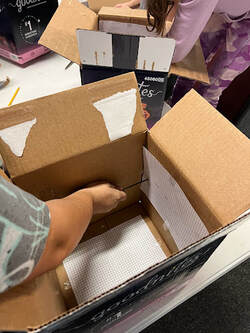 Next, we used either a compass end or a file to poke holes through the cardboard box where the stars of the big dipper were located on the grid paper taped to the box. 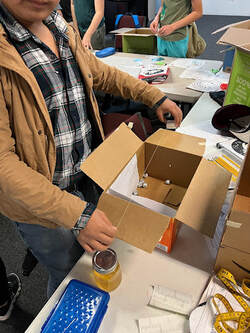 We took some thread and made sure that it was longer than the length of the box and cut it. 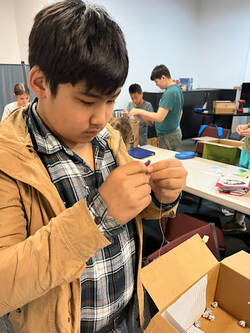 Next, we threaded a needle. We used the threaded needle to go from the outside of the box to the inside of the box and taped the thread to the outside of the box. While the thread is in the box, we threaded it through a loosely crumbled piece of foil. Then, we went through the middle stars of the big dipper on our grid paper first and taped the thread on the outside of the opposite side of the box. We did this 7 times to complete the model A completed model 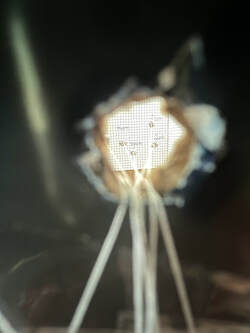 Seeing the Big Dipper from our hole in the cardboard box representing our view from earth. There is also a hole on the side of box that lets you view the stars from outside the earth. Galaxies and Can Stars Sing Note taking Guide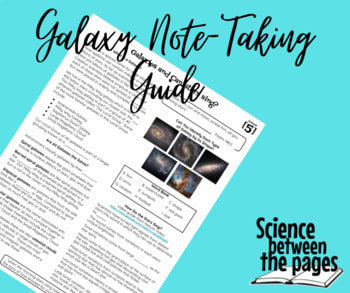 I focused our class time on making our model but these are the notes that I gave my students to read and do at home. Included are two videos. Here is a video on how stars sing And this is a video on how the stars, whales and us can all worship God. Its amazing!!! |
Lead LearnerWelcome! My name is Nicole Fleming and I have been leading science learning in the Bryan/College Station homeschool community for over 10 years. Archives
April 2023
Categories |
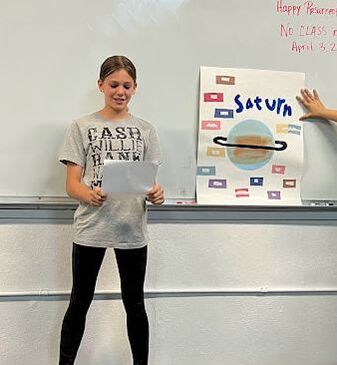
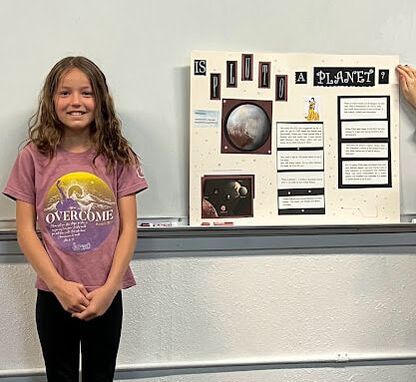
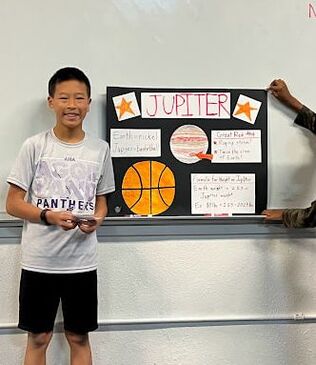
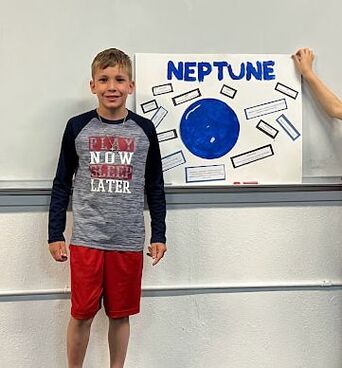
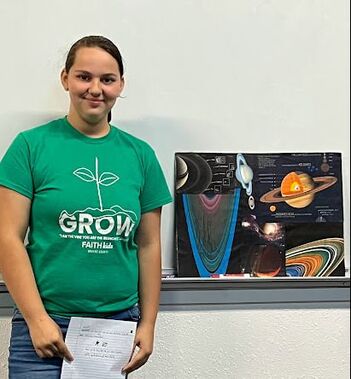

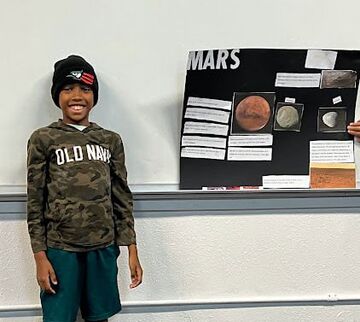
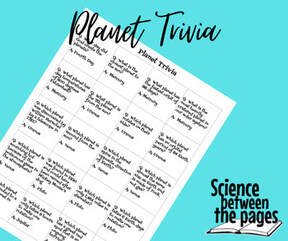
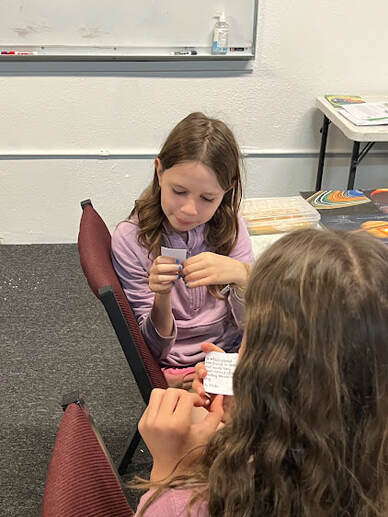
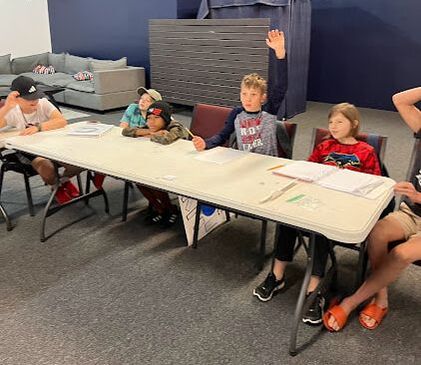
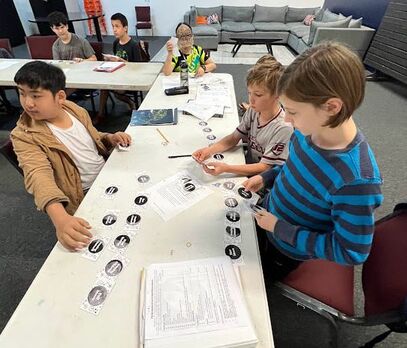

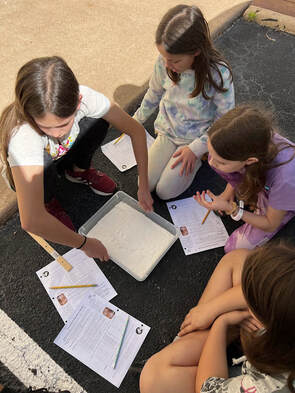
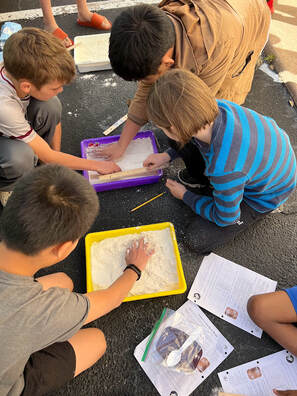
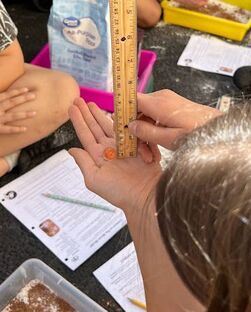
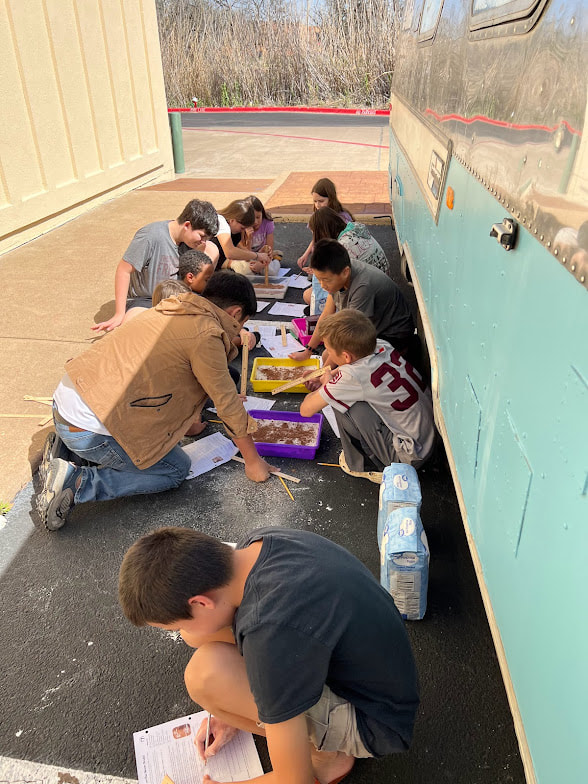
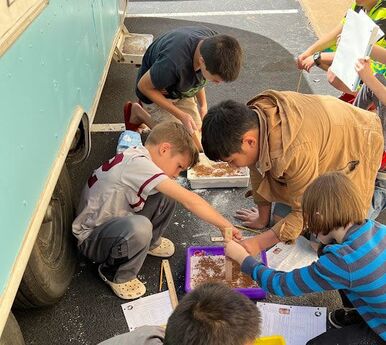
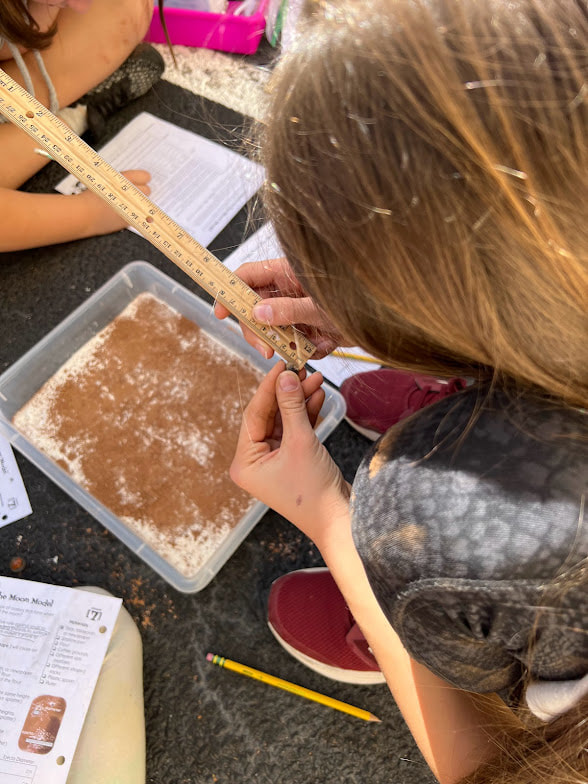
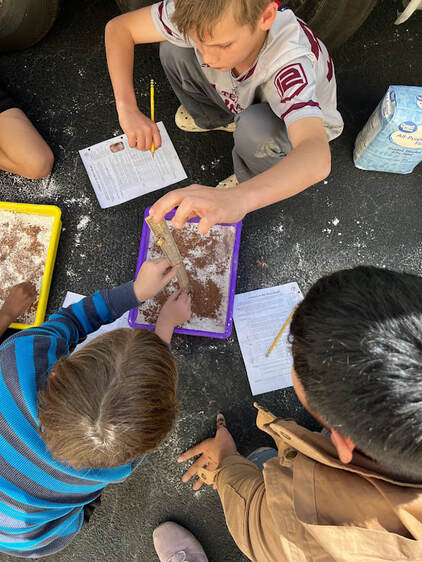
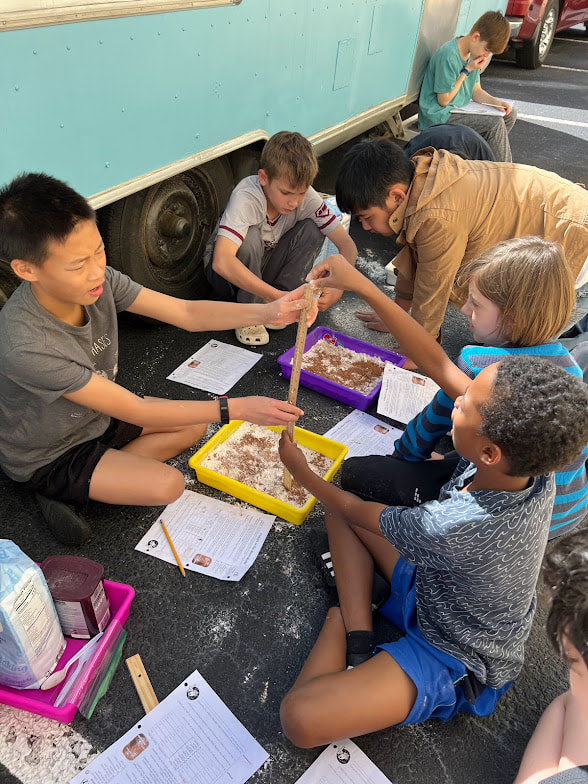
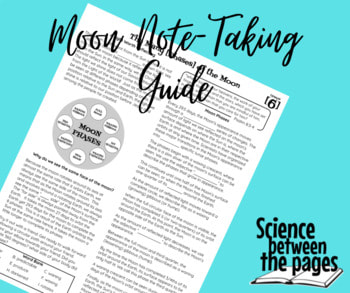
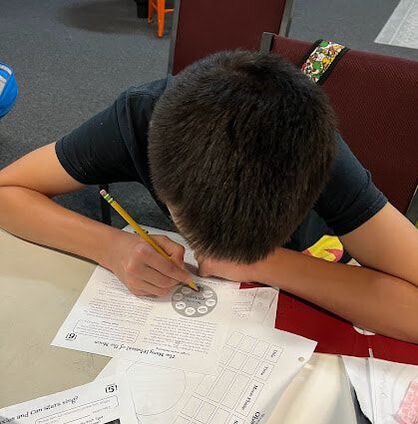
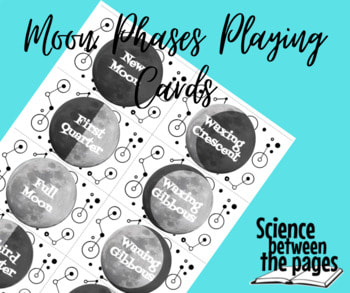
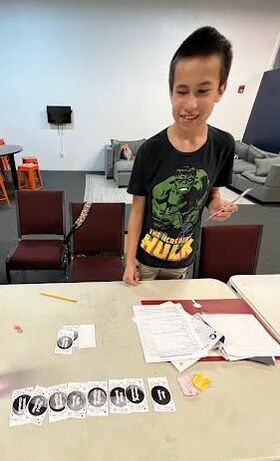
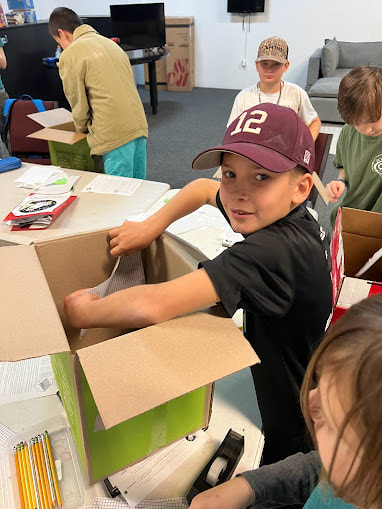
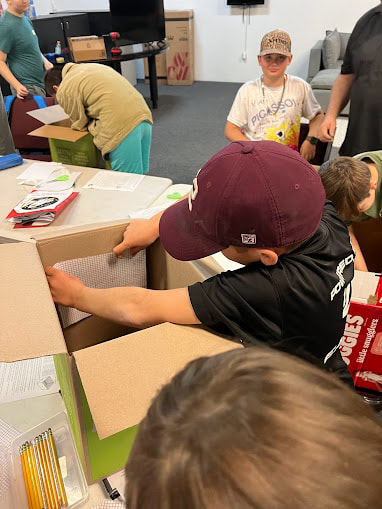
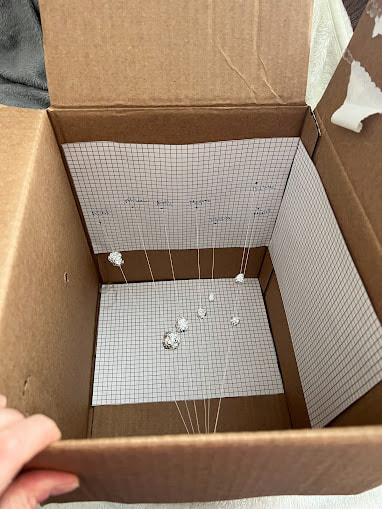
 RSS Feed
RSS Feed